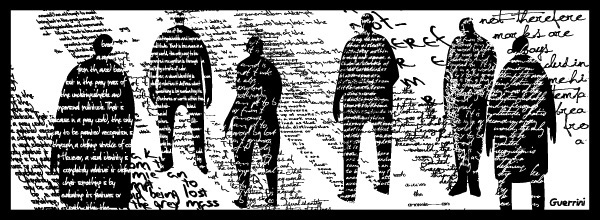We can think of a visual identity as being no more than a stroke of color within a blank space, a detail, which differentiates someone or something from the rest, from other such distinguishing marks within a universe made up of marks.
Now, a mark may be defined as that which distinguishes someone or something from what it is and is not—therefore marks are always excluding something in an attempt to break away from the anomie—an attempt to avoid being lost in the grey mass of the undistinguishable and impersonal multitude. That is because in a grey world, the only way to be granted recognition is through a defining stroke of color.
However, a visual identity is completely relative: it defines what something is by evaluating its features or worth within the established social parameters. Ultimately, something can only be called “cold” or “big” in relation to something. In other words, something can only be cold or big if something other existence is defined as hot or small. As the saying goes: “In the land of the blind, a one-eyed man is king.”
Let’s take the example of handwriting analysis:
In Graphology, comparisons are made by using a valid parameter (like the handwriting taught at school, which happens to belong to the teacher) to analyze someone’s handwriting. Then, the graphologist will compare such handwriting with the analyzed one, and find thus differences, abnormalities, expressions, and mannerisms, which may be used to define the personality or identity of the person being analyzed. Consequently, the person in question will be socially defined by the images (or marks) he created with his handwriting.
Using this example, we can deduce that something similar happen with all visual identities, while they will initially be segmented, classified and ordered by their spectators according to cultural parameters.
© Sebastian Guerrini, 2010




